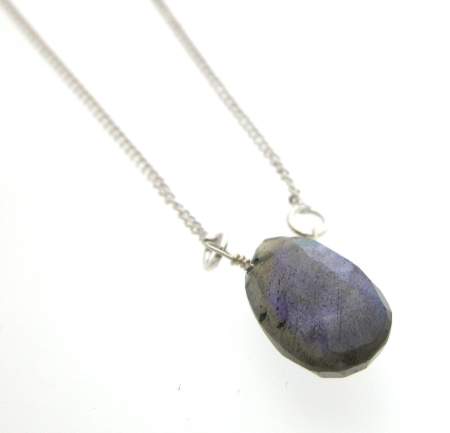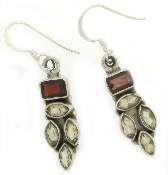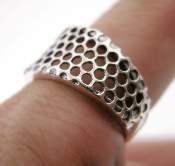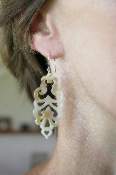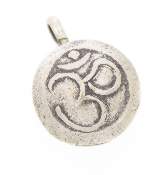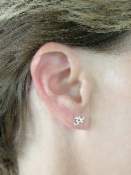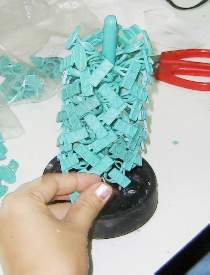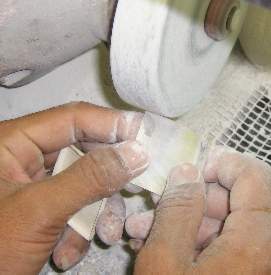| September Special: orders over $150 get $7 off |
|
||||||||||||||||||||||||||||||
|
September
Update The good news is that I have had some time to work on articles, so this issue and the next will feature what I think are some really interesting pieces. Today's article gives some background on how our silver jewelry is made, which is always good to know if you plan to sound knowledgeable when selling it. Some of the info may be familiar to you, but I'll bet there's a thing or two you may not have known. Silver prices have been creeping up the last few weeks. Last month they moved up from just above $11 to about $12.30 per oz. the last few days. We haven't seen this price in a while. Just confirmation that silver is more popular than ever! Shipping news... We got our domestic Fedex rates back, so the world is now a better place. International rates are still high, so we had resorted to using the US Postal Service. That has been less than satisfactory, so we have now worked out good arrangement with DHL. I think the new rates will make all our international customers smile again. I have some great new designs on the way, some of which have already arrived. There's lots more coming though, most of which should be in before October's Newsletter. Can you believe it's already September? Christmas is coming!!! Click here to see everything added since the last newsletter. Article: Handmade Indian Jewelry A Brief History While Indian arts of the period were not limited to jewelry, because they were also known for their architecture, sculpture, metallurgy and pottery bead making, precious metal adornments attributed to pre-classical period (earlier than 500 BC) Indian artisans has been uncovered as far away as current day Iraq. In succeeding centuries, the art of jewelry in India, as with all other handicrafts, saw technological changes and influences from Greek, Persian, Roman, Central Asian, and Chinese culture. Due to the great demand for Indian products, especially those of high value and light weight, jewelry from the Indian subcontinent served as much as a carrier of value as it did an objet d'art Under the Mughal Empire (1526-1707), the art of jewelry reached its acme. Inlayed with rubies, emeralds, sapphires and semiprecious gems like garnet, amethyst, and topaz, the silver and gold work of the period was renowned the world over. Jewelry of this period was associated with fantastic wealth, as it was often commissioned by the King, Queen or other member of the royal family. It is interesting
to note that jewelry made during this period was almost always a
collaborative effort. Each of the three important aspects of Mughal
Era jewelry, form/structure, decoration, and enameling. Enameling
lent itself as much to function as it did to form: it helped to
strengthen jewelry made from high purity (and therefore inherently
weak) gold and silver.
|
|
||||||||||||||||||||||||||||||
|
Indian
Jewelry Today The sound of hammering, filing, and sawing would be as familiar to a silversmith from 1706 as it would be to one in 2006. And make no mistake: modern tools are no replacement for craftsmanship and technique. Anyone who has ever tried to solder a joint without having solder run to the lowest point on the piece will attest that there is nothing like experience when it comes to making beautiful jewelry. Jewelry making in India takes place all over the country, but without a doubt the center of the silver making business is Jaipur in the arid northwestern state of Rajasthan. Summers are hot, and the city of 2 million has its foundation firmly built on the manufacture of stone (mainly marble for architectural purposes) and precious metal jewelry. The process of making jewelry begins with the smelting of fine granules of silver and silver scrap from previous melts into a liquid form. This is usually done using a gas furnace. The work is hot, and can be dangerous in the event molten metal is spilled. The liquid is then either cast using the "lost wax" technique, or it is extruded to make wire or rolled to make silver sheeting. In the casting process, a master piece is created of the jewelry design to be created. Duplicates are created by pouring hot wax into rubber molds. Once the wax has cooled, the duplicate is removed from the rubber, inspected and cleaned manually, then adhered to a large spindle called a "tree." The trees are placed in steel cylinders, then liquid plaster is poured in around the tree. Once the plaster has set up, the cylinder is placed in an oven to allow the wax to melt and drain out. At last the mold is ready for the molten silver. There are several variations on the casting theme. The traditional method calls for the silver to be poured into the mold, and allowed to cool. Using a vacuum to remove the air before pouring the silver in makes for a better final product, as the silver fills the mold more completely and air bubbles are less likely to form. Similarly, using a centrifuge forces the silver down into the mold and allows air to be expelled more readily. Of these variations, vacuum casting is most prevalent among larger Indian jewelry manufacturers. The alternative to casting is extruding the molten metal to create either wire or ingots. In the case of wire, the metal is repeatedly stretched and reheated to obtain the desired thickness and consistency. Repeatedly pulling, bending or hammering a piece of silver causes "tempering" or hardening of the metal. Reheating below the melting point makes the metal malleable again. Tempering creates a harder piece, but too much tempering results in a brittle piece that breaks easily. With ingots, the bar is pushed and pulled repeatedly through rollers under extreme pressure and occasionally reheated to keep it from becoming too brittle. Like pasta through a pasta roller, with each subsequent pass the silver is pressed thinner and stretched longer. This process is repeated until the ingot is flattened into a long sheet of silver that is the required thickness. Using silver in two forms, wire and sheet, intricate handmade jewelry is created. Wire can be twisted, shaped, squared or pulled into fanciful shapes of great complexity. Silver sheet can be cut to desired widths, pressed into shapes using jigs, and soldered to form three dimensional designs, balls, boxes, clasps, tubes and more. Finally, silver solder is used to fill in seams, close shapes, adhere designs and hold stones in place. When stones are added to a piece, they are generally fixed using either prongs or bezels. Prongs are easy to use and can accommodate a slight variation from piece to piece and stone to stone. For bezels, a thin piece of sheeting is cut to a narrow width, then curved to fit a specific stone exactly. No other stone will fit exactly right once the bezel has been created. Of all the skills a silversmith can master, the making of a tight bezel is one of the most important: too loose and the stone falls out, too tight and the stone can crack or the bezel split. Interestingly, casting has often been looked down upon by Indian silversmiths, not because it is less "handmade," but instead because it requires almost as much labor as an entirely handmade piece. The cast piece needs to be cut from the tree, filed, checked closely for defects and it requires the additional capital outlays associated with casting equipment plus extra training for those who do the casting. It would seem that a cast piece would be less expensive to make than a completely handcrafted piece, but in fact the reverse is true! After a piece has been "created" using either casting or smithing, it looks nothing like a finished product. The entire piece is covered with black soot from the torch and with white scale from heating either in the mold or in from the torch. Each piece undergoes a detailed finishing process that is mostly manual in nature. Workers check for problems with solder, joints and detail. Rough spots are filed, seams are smoothed to make them more attractive. Any problems with the piece at this point will only become worse with the finishing to come. The next step is polishing using an electric buffing wheel and rubbing compound. This solves some problems and creates others. It creates a brilliant sheen on the relief surfaces, but lower spots, as in between filigree or in tight spaces like around the base of a bezel or inside the band of a ring. In the past, handwork and caustic chemicals were the only tools available for cleaning tight spots, and each had their limitations. Now however, there are some new options on the table. The first is ultrasonic cleaning. As the name implies, sound is used (in conjunction with a mild detergent usually) to clean the places where tools cannot reach. The result is better than either handwork or chemicals alone, but the silver still tends to look a bit off-color in contrast to those portions polished by the wheel. Several medium and larger silver companies now employ an electroplating method that coats the entire piece (except stones) with a thin coat of .925 silver. The result is stunning. There are no dark marks anywhere, the solder joints are all the exact same color as the rest of the piece and it is more resistant to tarnishing. Of course each step along the way adds cost, not only for labor but in the case of buffing, in lost silver. A typical silver ring will lose about 1/2 gram of silver weight during buffing. The silver coating at the end of the process adds only a small amount to the finished cost, since only a few micrometers of silver are added. The journey from primitive body adornment to current high tech jewelry making has been a journey of 5000 years. Who knows what technology will offer us going forward, or what beauty new techniques will allow us to create. Fall &
Winter Trends: Highlights of the Site Everything added since last newsletter New jewelry designs added New Arrivals section has all the latest and greatest. New chains have been added. Don't miss out on the great discount we are offering all month long. Until next time... Aloha, Mike McGinnis |
|||||||||||||||||||||||||||||||
